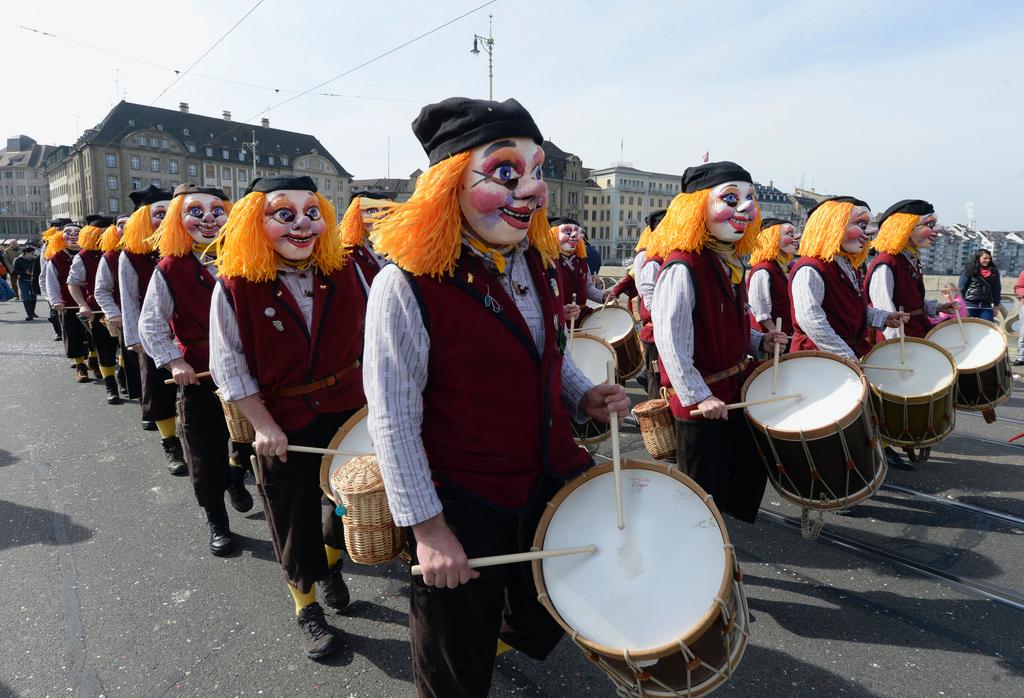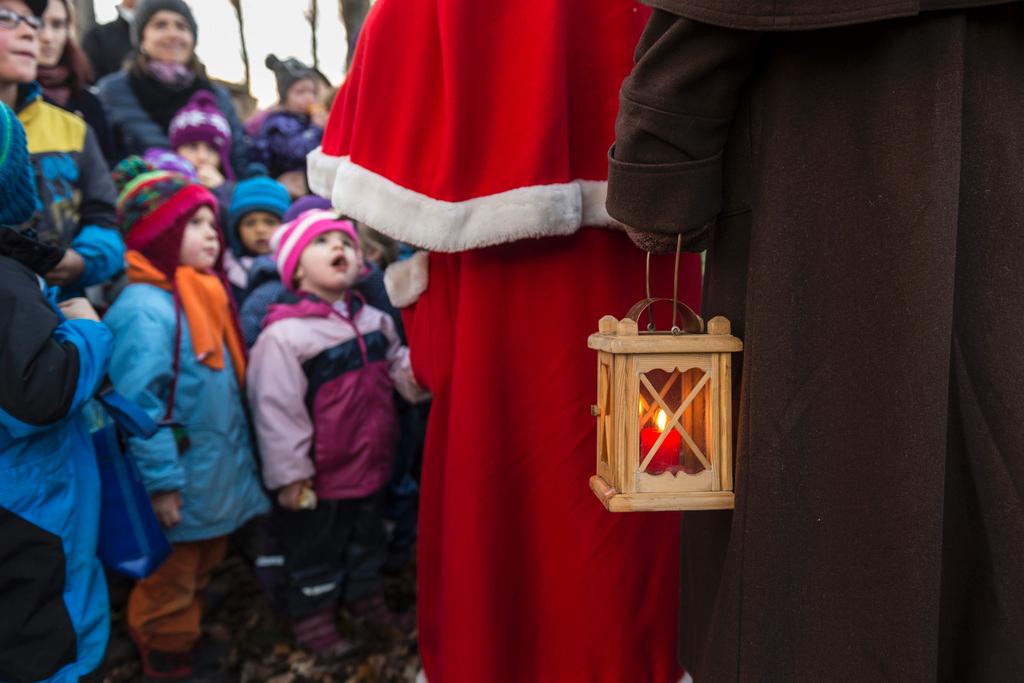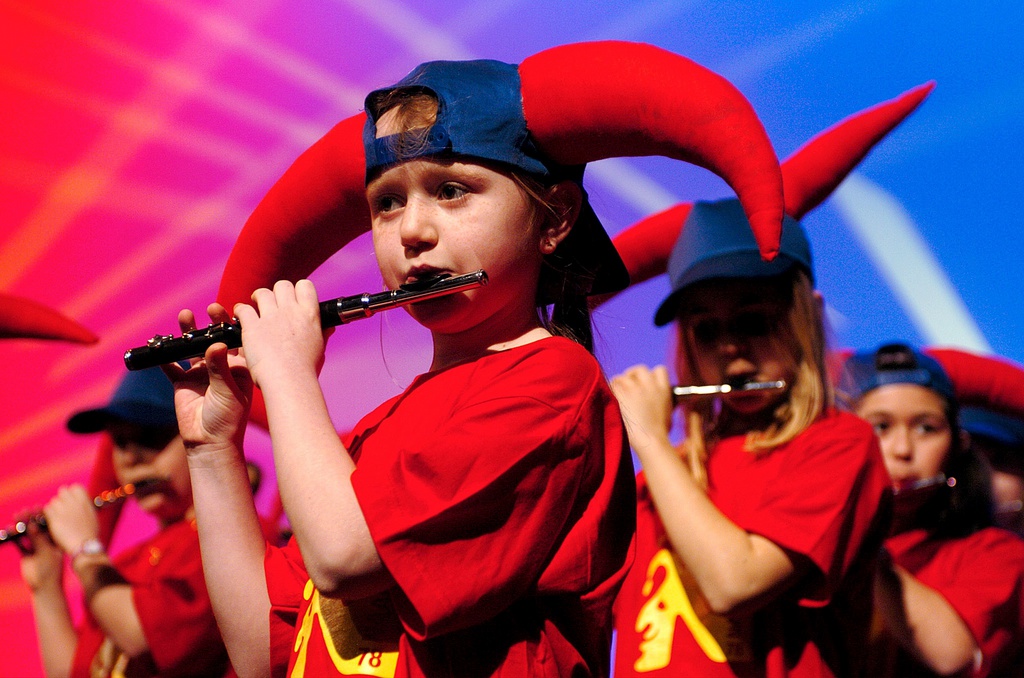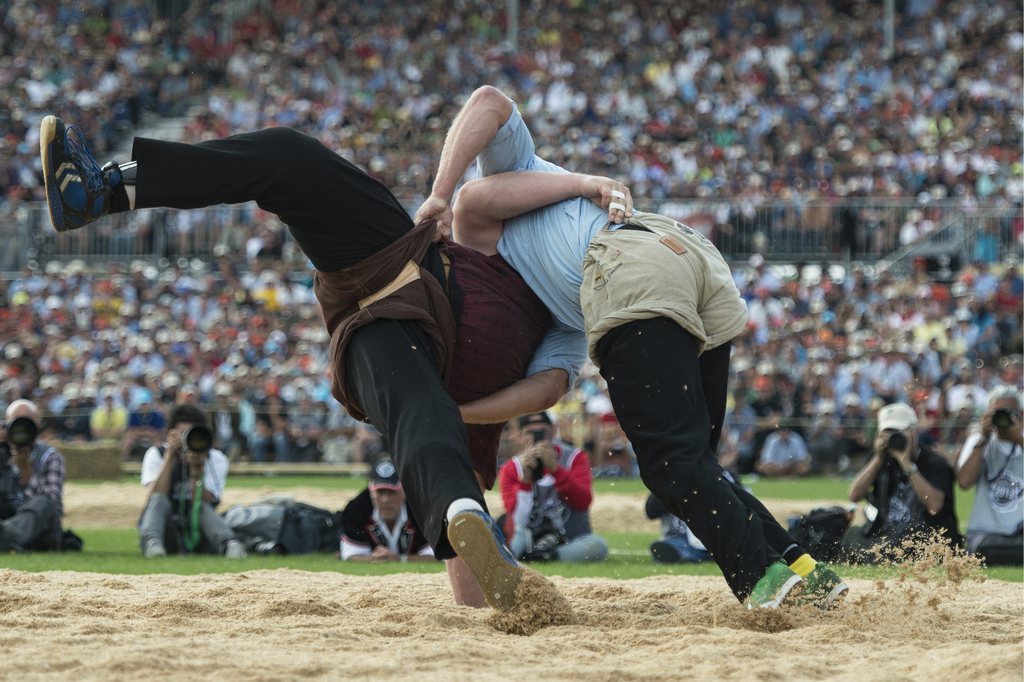Customs and festivals

From Carnival to yodelling festivals, Swiss customs and traditions are as varied as each of the cantons in the confederation.
The brassy discordant noise of a Guggenband in Basel (pictured), the onion market in Bern, traditional Alpine wrestling in mountain hamlets or even watching cows with colourful headdresses coming home from their high summer pastures are just a few of the examples of customs and traditions that attract tourists and locals alike.
Just as each region has its own traditional costume, there is hardly a Swiss village or district which does not have its own particular customs and events.
Generally speaking, the most colourful festivals of the year are Christmas and, at least in Catholic areas, Carnival. For an exhaustive list of customs in Switzerland, please visit Switzerland TourismExternal link.

More
Here comes Swiss St Nick
Even before Christmas there are seasonal markets in many towns and cities. And on the feast of St Nicholas (Dec 6), the familiar figure comes in the night and leaves presents for children. He looks different from a department-store Santa Claus of the North American variety. He is often dressed in red, but may also be in white, and bears the mitre and the crook of a bishop. His presents are carried by a donkey. He is accompanied by a somewhat sinister-looking figure – called Schmutzli in German-speaking Switzerland and Père Fouettard in French – who helps him dole out presents but also keeps a book of accounts to see if children have been good in the past year.
Christmas is usually celebrated on the evening of the 24th, not the 25th, with a festive meal, the content of which varies from region to region. On the 25th itself, people visit family or just relax.We recently discussed some Swiss holiday customs and traditions in a live broadcast on swissinfo.ch’s Facebook page:External link
Carnival
Carnival (called “Fasnacht” in German-speaking Switzerland) is celebrated in Catholic areas in the run-up to Ash Wednesday, the beginning of Lent. One of the most elaborate carnivals is in LucerneExternal link. Oddly enough, the Protestant city of Basel has its own carnivalExternal link, a 19th-century revival that is the largest in Switzerland – but it is held the week after Ash Wednesday.
Carnival is traditionally the time for letting one’s hair down and indulging in excesses of all sorts before the rigours of Lent begin. Associated with the traditional atmosphere of licence, it is also a time for satirical verses and mockery of current events.
Both adults and children wear masks and costumes somewhat reminiscent of Halloween. A lot of work goes into the sewing of the elaborate matching costumes worn by the strolling brass bands, and into practising the cacophonous music. The masks and the noise-making are thought to go back to pre-Christian rituals designed to frighten away the evil spirits of winter and usher in the spring.
Other festivals
In the Engadin, where the Romansh-speaking people are Protestant, there is a different spring festival called Chalandamarz (“the beginning of March”) during which youths and children make lots of noise ringing large cowbells and cracking whips. And in Zurich each April they have Sechseläuten, where they burn the “Böögg”, an effigy representing winter, on a huge bonfire. The longer he takes to burn, the worse the summer’s weather will be.
Many festivals have a historical meaning. In Geneva in early December, the EscaladeExternal link commemorates an event in 1602 when hostile troops tried to scale the city walls by night but were repelled by the vigilance of the citizens.
The Swiss national holiday is held on August 1. The day was chosen because on August 1, 1291, the first three Swiss cantons swore an oath on the field of Rütli above Lake Lucerne to form a confederation. On this day all over the country people meet to hear patriotic speeches, and at night bonfires are lit and fireworks set off in celebration.

In compliance with the JTI standards
More: SWI swissinfo.ch certified by the Journalism Trust Initiative












You can find an overview of ongoing debates with our journalists here . Please join us!
If you want to start a conversation about a topic raised in this article or want to report factual errors, email us at english@swissinfo.ch.